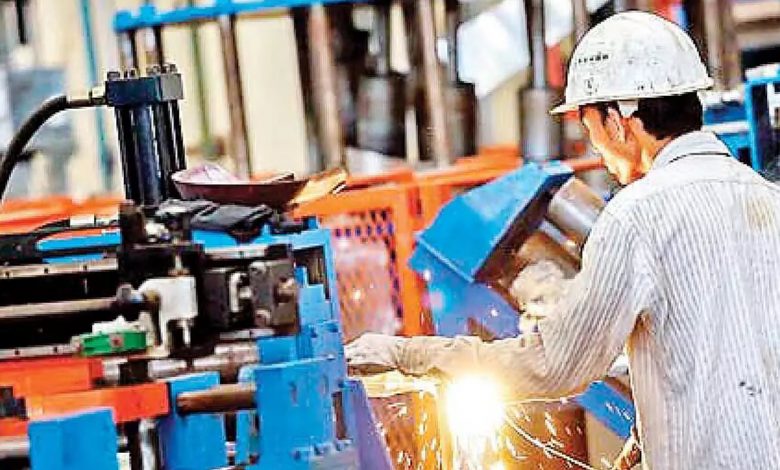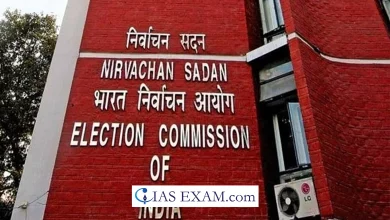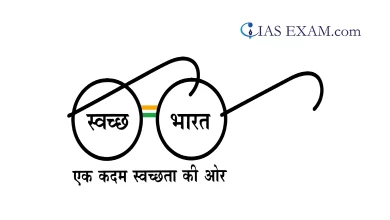Realization of the full Potential of the MSMEs
[GS Paper 3 - Indian Economy, Government Budgeting]

Context – India overtook the UK as the world’s fifth largest economy in 2022 and is on track to achieve PM Narendra Modi’s vision of a $5 Trillion economy by 2026-27. Despite concerns of an impending global recession, supply disruptions over the Russia-Ukraine War, India has stood out as a bright spot, growing faster than most of the major economies of the world.
The Central Government’s Budget for 2023 provides an opportunity to make the Indian MSMEs more competitive and self-reliant.
What are MSMEs?
MSME stands for Micro, Small, and Medium Enterprises. This sector has emerged vibrantly in the Indian Economy. MSMEs can be seen as complementary to large-scale industries and contribute to a great percentage of the Indian economy and socio-economic development.
Micro, Small and Medium Enterprises Development (MSMED) Act, 2006 which was notified on October 2, 2006, deals with the definition of MSMEs. The MSMED Act, 2006 defines the Micro, Small and Medium Enterprises based on:
- The investment in plant and machinery for those engaged in manufacturing or production, processing or preservation, and
- The investment in equipment for enterprises engaged in providing or rendering of services.
MSMEs in India
- The 6.3 crore micro, small and medium enterprises which account for 30% of GDP and employ nearly 11 crore people have demonstrated this spirit of resilience.
- With sales in several industries across the MSME sector reaching 90 per cent of pre-pandemic levels, India’s small businesses are scripting a turnaround.
- MSMEs provide about 110 million jobs which is 22-23% of the total employment in India. It is next highest to Agriculture. However, this sector still faces several challenges. Barely 15% of MSME units have registered with the UDYAM Platform. Heterogeneity, fragmentation and informalization highlight the need for reforms in this sector.
Opportunities with Union Budget 2023
- Streamlining input tax credit for e-commerce suppliers – Currently, suppliers selling on e-commerce platforms need to procure input services like logistics, which are taxed at 18 per cent. This leads to precious working capital getting blocked without any visibility of future realization, potentially discouraging suppliers from adopting e-marketplaces.
- Adequate working capital for small businesses – From meeting fixed expenses such as electricity, rent and employee wages to investing in future growth, adequate working capital is a must for small businesses.
- Lowering GST rates on input services – By lowering GST rates on input services availed by online sellers, the government will not only shore up their finances but also give a leg-up to their digitisation journey. Further, refunds of accumulated input tax credit will improve their cash flow situation.
- Expedited GST relaxation for small online businesses – There is also a need to expedite GST relaxation for small online businesses. In a landmark move last year, the GST Council announced a relaxation of rules for small businesses looking to go online.

- GST relaxation measures for small online vendors – Among other measures, mandatory GST registration was waived for small online vendors with a turnover of less than Rs 40 lakh and Rs 20 lakh for goods and services, respectively.
- Unlocking the potential of MSMEs through Digitization – With just 10% of our MSMEs currently online, expeditious implementation of these new norms is key to unlocking their full potential. Millions of small businesses are waiting in the wings, hoping to reap the benefits of digitisation such as a much bigger addressable market, increased efficiencies and easier access to capital.
- NLP can also be leveraged to make MSMEs competitive – The National Logistics Policy (NLP) aims to bring down logistics costs as a percentage of the GDP from 13-14% to 8%, on par with developed nations. While lower costs will encourage more MSMEs to use tech-powered logistics services, they will need support to tap rising e-commerce demand from smaller towns and semi-rural areas.
- Indian post and railways can be utilized for cost effective last mile delivery – The government could rope in India Post as a tech-enabled last-mile delivery partner that can facilitate cash-on-delivery transactions at competitive prices. Similarly, the unparalleled reach of Indian Railways can be synergised to ship wares to the remotest parts of the country quickly and cost-effectively.
Importance of MSME Sector for India

- Employment – The Indian MSME sector provides maximum opportunities for both self-employment and wage-employment outside the agricultural sector.
- Help building inclusive and sustainable society – It contributes to building an inclusive and sustainable society in innumerable ways through the creation of non-farm livelihood at low cost, balanced regional development, gender and social balance, environmentally sustainable development, etc. For example: Khadi and Village industries require low per capita investment and employ a large number of women in rural areas.
- Contribution to GDP – With around 36.1 million units throughout the geographical expanse of the country, MSMEs contribute around 6.11% of the manufacturing GDP and 24.63% of the GDP from service activities.
- Exports – It contributes around 45% of the overall exports from India.
Way Forward
With a visionary government charting out the nation’s growth path, it is anticipated that the budget would certainly deliver on the challenges for MSMEs and take us closer to the dream of an Atmanirbhar Bharat.





.png)



